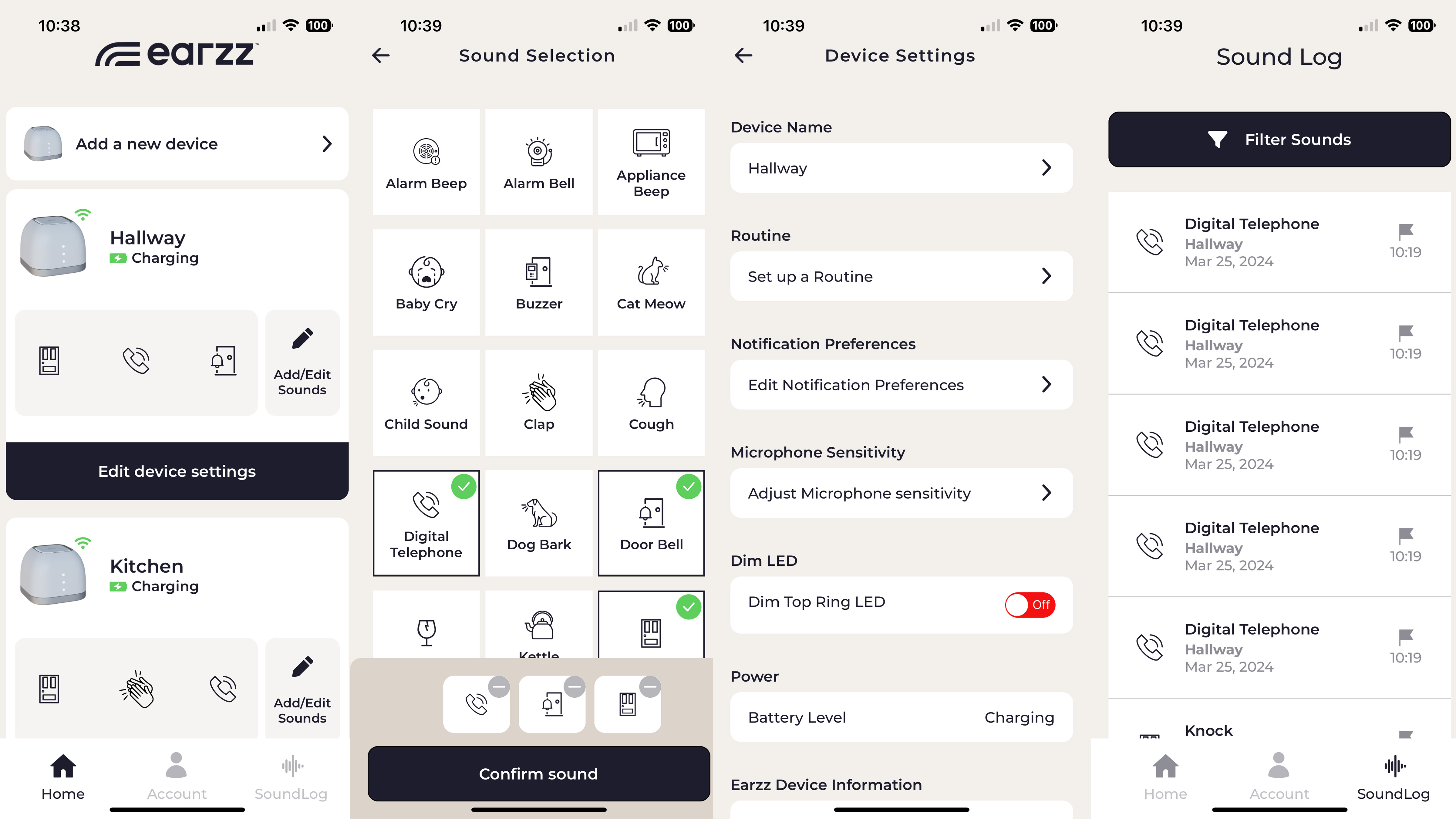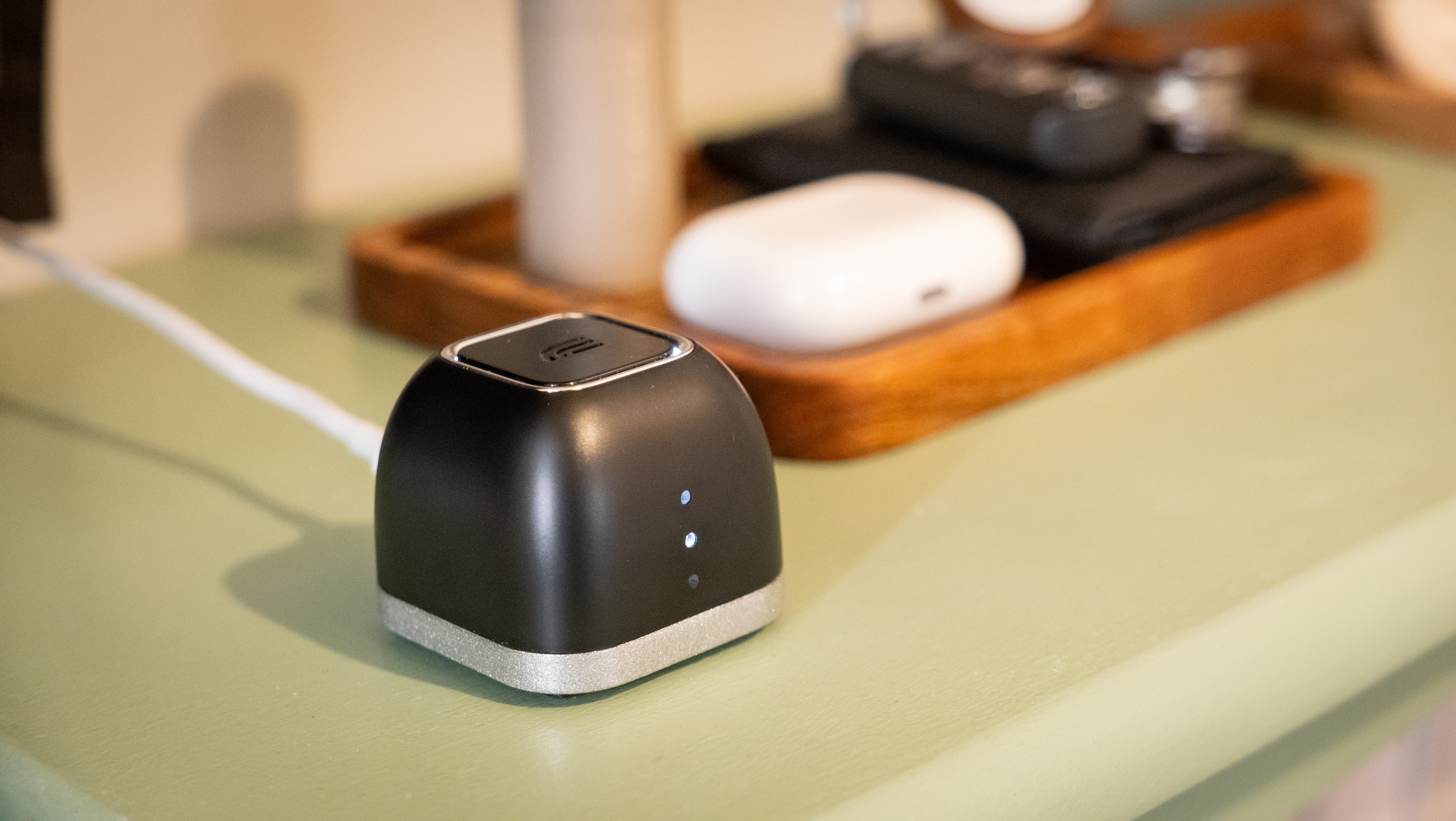TechRadar Verdict
The Earzz promises to be helpful around the home – especially for those who suffer reduced hearing – by using AI that listens out for specific sounds while ignoring speech. Notifications arrive promptly and the gadget is generally good at picking out sounds such as doorbells, buzzers and alarms; but the AI still requires some training to be perfect. It once mistook a smoke alarm for an "appliance beep" such as that of a microwave, and failed to hear both my washing machine and intercom buzzer – at least until the team at Earzz added the latter to their sound library, after which it worked perfectly.
Pros
- +
Compact, robust design
- +
Quick to set up and configure
- +
Broad range of alert options
Cons
- -
Notifications sometimes slow
- -
Poor Wi-Fi strength
- -
Sounds recognition AI not yet perfect
Why you can trust TechRadar
Earzz: One-minute review
This is review is part of TechRadar's Smart Home Week 2024, where we're giving you all the latest news, tips and tricks to help you make the smart home of your dreams.
The Earzz sensor uses a microphone, smartphone app and AI to alert you to specific sounds, from a baby crying or a dog barking, to a doorbell, the beep of an appliance or broken glass. The result of a successful Kickstarter crowd-funding campaign, the Earzz is designed as much for the smart home (with IFTTT integration) as it is for helping carers respond to dependants and their needs in a reliable but anonymous way.
It offers around eight hours of battery life, so for most use cases you’re best leaving it plugged in with the included USB-C cable. You can set the Earzz to listen out for up to six of the 20-or-so available sounds. Phone notifications come through quickly, often in just a couple of seconds, and the app keeps a record of every time the device is triggered.

Imagination is key to getting the most out of Earzz. It can buzz your phone when there’s someone at the door, or let a care home worker know when a resident might have fallen. Add IFTTT integration and the Earzz could flash a smart light when your washing machine is finished.
The hardware is pretty basic, but it feels well made. It’s simple to set up and use, and there’s plenty of functionality to be explored. However, it doesn’t always perform as well as I'd hoped, and cannot always be relied upon to deliver accurate alerts promptly. A work-in-progress for now, but the AI will surely improve with training.

Earzz: Price and availability
- How much is it? £79.99 (about $100), plus subscription
- When is it available? Available now
- Where is it available? In the UK, with shipping to US available
At £79.99, or about $100, the Earzz isn't cheap, especially when you factor in the subscription; the company advertises this as £7.99 a month but it's billed at £95.88 annually (about $120). The high costs means this perhaps isn't the sort of gadget you'd buy on a whim to experiment with in your smart home.
Instead, it's aimed at people who are perhaps hard of hearing and need a way of being notified about things such as knocks at the door or a smoke alarm. Naturally, there's a lot of value in such a product, but the high price means casual smart home fans might think twice.
Earzz: Specs
| Row 0 - Cell 0 | Earzz | Row 0 - Cell 2 |
| Dimensions: | 5 x 5 x 4cm | Row 1 - Cell 2 |
| Connection: | USB-C, Wi-Fi, Bluetooth (the latter for setup only) | Row 2 - Cell 2 |
| Weatherproofing: | No, indoor only | Row 3 - Cell 2 |
| Battery life: | Approx. eight hours | Row 4 - Cell 2 |
| Smart home connectivity | IFTTT | Row 5 - Cell 2 |
| Scheduling function: | Yes | Row 6 - Cell 2 |
| Color options: | Black and white | Row 7 - Cell 2 |
| Subscription: | Yes, £95.88 annually | Row 8 - Cell 2 |
Should I buy Earzz?
Buy it if...
You’re a smart home fanatic looking for a new gadget
IFTTT support means the Earzz can control a huge range of smart home devices, from lights and plugs, to door locks, hearing aids and automated pet feeders. A routines function is also handy for scheduling when the Earzz alerts you and when it doesn’t.
You're hard of hearing and need help with household alerts
This is really the whole point of the Earzz. It will alert you via your phone, tablet or smartwatch when something you can’t hear – a knock at the door, a microwave beeping, or the dog barking to be let out, for example – has happened.
You work in a care home setting
Although Earzz sells to the general public, the big play here is a bid to have the device adopted by care homes. Here, it can be configured to alert staff if a resident falls or is having a restless night – and, crucially, without invading their privacy, since Earzz’s AI isn’t trained to recognise speech.
Don't buy it if...
You need absolute reliability
I have no doubt the AI used by Earzz will improve over time, but in testing I found it wasn't always reliable. It failed to recognize the beeps of my washing machine and didn't always hear door knocks correctly.
You don’t have a wall socket in the right place
The Earzz has a battery that lasts around eight hours, but ideally it needs plugging in with a USB-C cable. You’ll need a plug socket in the right place – close to your router and the intended sound source – for best results. Signal strength isn’t great, with the app claiming just 61% when less than a meter from a Wi-Fi extender.
You don’t want an ongoing subscription
The Earzz costs a fairly steep £79.99, plus an equally pricey £7.99 a month – but be careful, because that’s not a monthly sub at all, and is actually billed as £95.88 a year. However, at the time of writing an offer means your first Earzz is free if you pay for a year’s subscription.
How I tested Earzz
- I lived with Earzz for a couple of weeks
- I tried out almost all of the 20 different sound alerts
- I connected the Earzz to my IFTTT account
I created an Earzz account and connected the device to my Wi-Fi network. I then went about testing the Earzz using a variety of real and recorded sounds. This included my intercom buzzer and washing machine; but, unfortunately, the Earzz failed to recognise either. To help things along, I sent a recording of my buzzer to the Earzz team, which added it to their sound catalog. It now works perfectly, but I appreciate this isn't the sort of service a regular customer can expect.
In better news, it responded quickly to two different smoke alarms and a carbon monoxide monitor. It also worked well with IFTTT, and it was easy to create a routine where my Hue lights turn on when the door buzzer is rung.
The app lets users provide feedback for every sound the Earzz hears. I dutifully did this, telling the app what it got right and, more importantly, when it got things wrong, and what the sound should have been. This should help the AI improve over time.
I also played a range of doorbell sounds and dog barks from a computer. These were mostly recognised – but, sometimes, the notifications arrived slowly. I’m told Wi-Fi strength is a factor here, but since the app claimed the Earzz never had more than around 65% signal strength, even when right next to a router or network extender, I couldn’t improve this.
This is article is part of TechRadar's Smart Home Week 2024, where we're giving you all the latest news, tips and tricks to help you make the smart home of your dreams.
Alistair Charlton is based in London and has worked as a freelance technology and automotive journalist for over a decade. A lifelong tech enthusiast, Alistair has written extensively about dash cams and robotic vacuum cleaners for TechRadar, among other products. As well as TechRadar, he also writes for Wired, T3, Forbes, The Independent, Digital Camera World and Grand Designs Magazine, among others.

